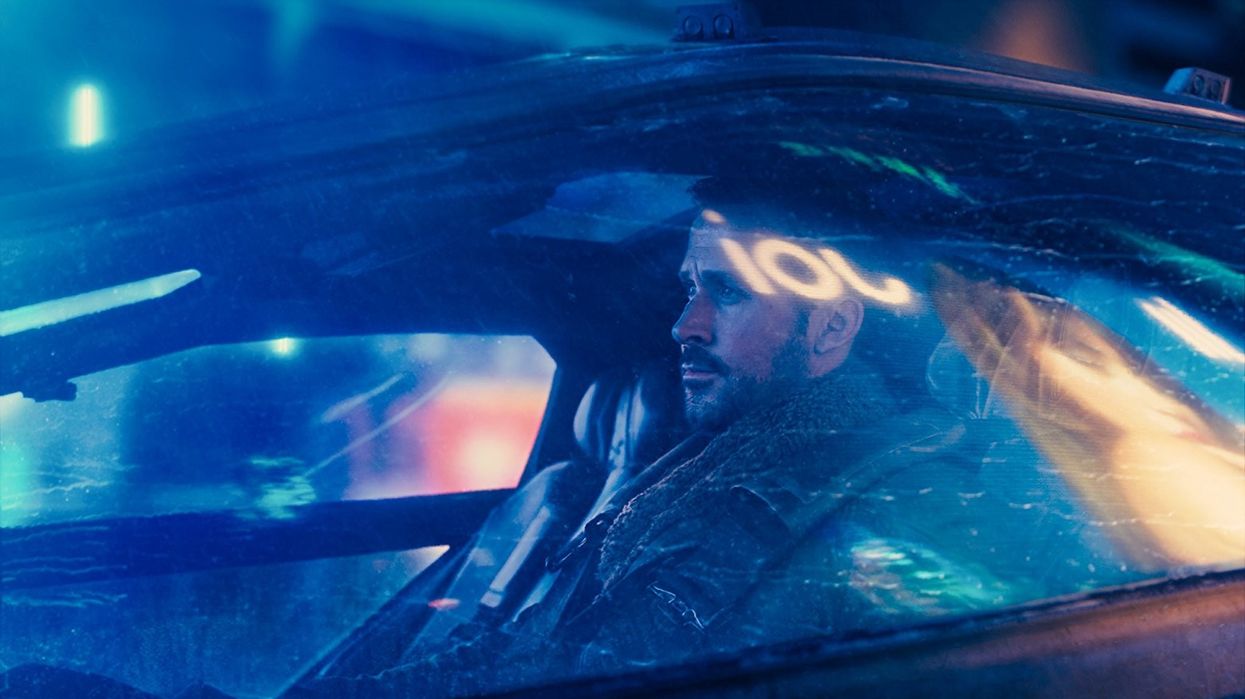Exploring the Futuristic Sound Design of 'Blade Runner 2049'
Get an inside look at how the futuristic, dystopian sound of 'Blade Runner 2049' came together.

Many in the film community, especially cinematography nerds, celebrated big time when Roger Deakins took home the Oscar for Best Cinematography for Denis Villeneuve's neo-noir sci-fi sequel, Blade Runner 2049. However, the film was also nominated for five other awards, including Best Sound Editing and Best Sound Mixing, and BAFTA Guru decided to give fans of the film an inside look at the film's Oscar-nominated sound design.
In this video, the film's re-recording mixer, Ron Bartlett, and supervising sound editor, Mark Mangini, discuss how they managed to design the complex soundscape that brought Blade Runner 2049's futuristic dystopia to life.
The sound of Deckard's Spinner
Mangini designed many of the iconic sounds used in the film, and he explains how he created the sound effects for the "spinner" hovercrafts that Deckard operates. The sound has multiple layers, but two of them consist of swinging bullroarers, the sound of which was later manipulated, and a vibration, which was made by playing a low-frequency sound on a subwoofer placed in his wife's Honda Element and recording the vibrations of all of the small, moving parts.
Visual and sonic metaphors
Learning about all of the little tricks Mangini used to create each sound effect is interesting and fun, but it's his philosophy and approach to sound design that is actually much more useful to those interested in learning about the craft.
Mangini describes how he often uses free associations with the sounds he records in order to create sonic metaphors to go with the visual metaphors in the film. So, when trying to come up with the sound design for the "spinners," he says that he naturally looked for spinning sounds. As mentioned previously, he went with bullroarers, but he also had to manipulate them to give them a texture that would resemble something like a futuristic engine performing different maneuvers, like taking off, flying by, landing, etc.
In Blade Runner 2049, sound informed the edit
One thing that both Mangini and Bartlett mentioned to BAFTA Guru that may help a new filmmaker more effectively navigate different phases of production is that Villeneuve insisted that sound inform the edit. According to Mangini, sound designer Theo Green started at the same time as film editor Joe Walker, which allowed the sound design to play a vital role in the way the picture was edited. He says:
Sound [is] 50% of the motion picture. [It] should inform the way the edit is created from day one. It should be constantly informing, such that, by the time photography is completed, you have a rough idea of the kind of movie you have.
Musical sound effects
Instead of filling the film with music, Villeneuve and Walker decided to try the same approach to sound design they use on Sicario and Arrival, which was to use "musical sound effects" rather than relying on actual music to create atmosphere and mood. In this video from Soundworks Collection, Walker describes the approach in more detail. The clip starts at around the 2:49 mark, but the rest of the video is great, too. You should definitely watch it in full!
It tied in with an aesthetic that we already had in place with the previous two films that we worked on. In Sicario and Arrival, we tried to reduce music to only when we really [needed] it...to try and rely on sound effects and silence and dialogue to kind of be the music of the film...that kind of fit in to the idea that we could probably try to generate at least a first assembly that was made up of musical sound effects rather than music itself.
So much work goes into sound design, and even though Bartlett, Mangini, and others that worked in the Sound Department do a great job explaining the creative approach to their work in Blade Runner 2049, you'll do yourself and your career good to work on your craft regularly, to take chances and experiment with sound design, and educate yourself as much as possible on the different ways you can create mood and atmosphere with sound.
Source: BAFTA Guru











